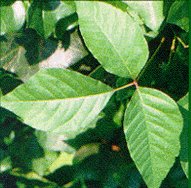Poison Ivy Facts And Information
Recognizing poison ivy symptoms is important. The sooner you begin treatment, the more effective it is. Before going over the poison ivy symptoms in detail, lets first go over some basic poison ivy facts.
The poison ivy plant has three leaves. Each leaf is 2-4 inches long, with the middle leaf being the largest. When mature, the leaflets are green, and can be dull or glossy. Poison ivy can take different forms: it can resemble a vine and grow on a tree trunk, fence or rock. It can grow as a small bush usually no larger than three feet, or it can spread along the ground like a small shrub.
Urushiol is the chemical in poison ivy (and poison oak and sumac) that causes an allergic reaction. Urushiol is present in all areas of the poison ivy plant, and is released when any part of the plant is touched. You can get poison ivy by touching the plant, or coming into contact with something that has rubbed against it. Examples include a dog that was in the woods, gardening gloves that were exposed, or golf balls that were hit into a vine.
If you try to burn poison ivy, the poison will become airborne and can be inhaled. This can be extremely dangerous and cause more severe reactions.
Now that we have gone over some basic poison ivy facts, lets go over the poison ivy symptoms.
Poison Ivy Symptoms
Poison ivy symptoms usually appear within 24-48 hours of exposure. You may be able to limit the symptoms if you wash the affected area immediately with soap and cool water. Do not use warm water, it can cause the urushiol oil to penetrate the skin faster.
- The first poison ivy symptom is red inflamed skin, which is very itchy. After a while blisters will form.
- Some people will develop a fever.
- In severe cases, the blisters may ooze.
- Less common and more severe symptoms include swelling in the throat, dizziness, or difficulty breathing. If you have a severe reaction, you should consult with a doctor.
You cannot catch poison ivy from another person. The only way to get poison ivy is by being exposed to urushiol.
Cures For Poison Ivy
There are no cures for poison ivy. Once the symptoms of poison ivy are present, all you can do is limit the severity and duration of the rash.
There are many different potential treatments to consider. Most treatments though, have drawbacks. Some take a long time to work, or can be very expensive. Others can have severe side effects. For example prednisone, which is commonly prescribed by doctors, can have side effects that are worse than the poison ivy. These include: nausea, vomiting, irregular heartbeat, joint pain, dizziness, darkening or lightening of the skin, etc.
After several years of searching, the editors of Healthy Skin Guide have finally found a poison ivy treatment that we are comfortable in recommending. It is called Burt’s Bees Poison Ivy Soap.
Burt’s Bees Poison Ivy Soap is an all-natural treatment that quickly works to eliminate the symptoms of reaction to poison ivy, oak, and sumac. Not only does it stop the itching, pain and burning, but it does so without using any dangerous steroids. Follow this link to learn more, and see if Burt’s Bees Poison Ivy Soap is right for you.
If you have any questions about the symptoms of poison ivy, or the poison ivy facts we discussed earlier, please contact us. If have tried any cures for poison ivy and would like to share your experience with our readers, please let us know.
Additional Reading:
One of the newer sections we have added is our review of home remedies for poison ivy. Since no poison ivy home remedy is reliable, we suggest you review our poison ivy cures section for some proven options. Some other helpful sections include how to treat poison ivy, is poison ivy contagious and how to tell its a skin rash from poison ivy.
***Update*** In response to emails from readers, we have added pages on the best cure for poison ivy and on the different types of poison ivy treatments. For more poison ivy facts, and for updates on new poison ivy remedies, please check back often.
More than Poison Ivy Symptoms on our Healthy Skin Guide Home Page
